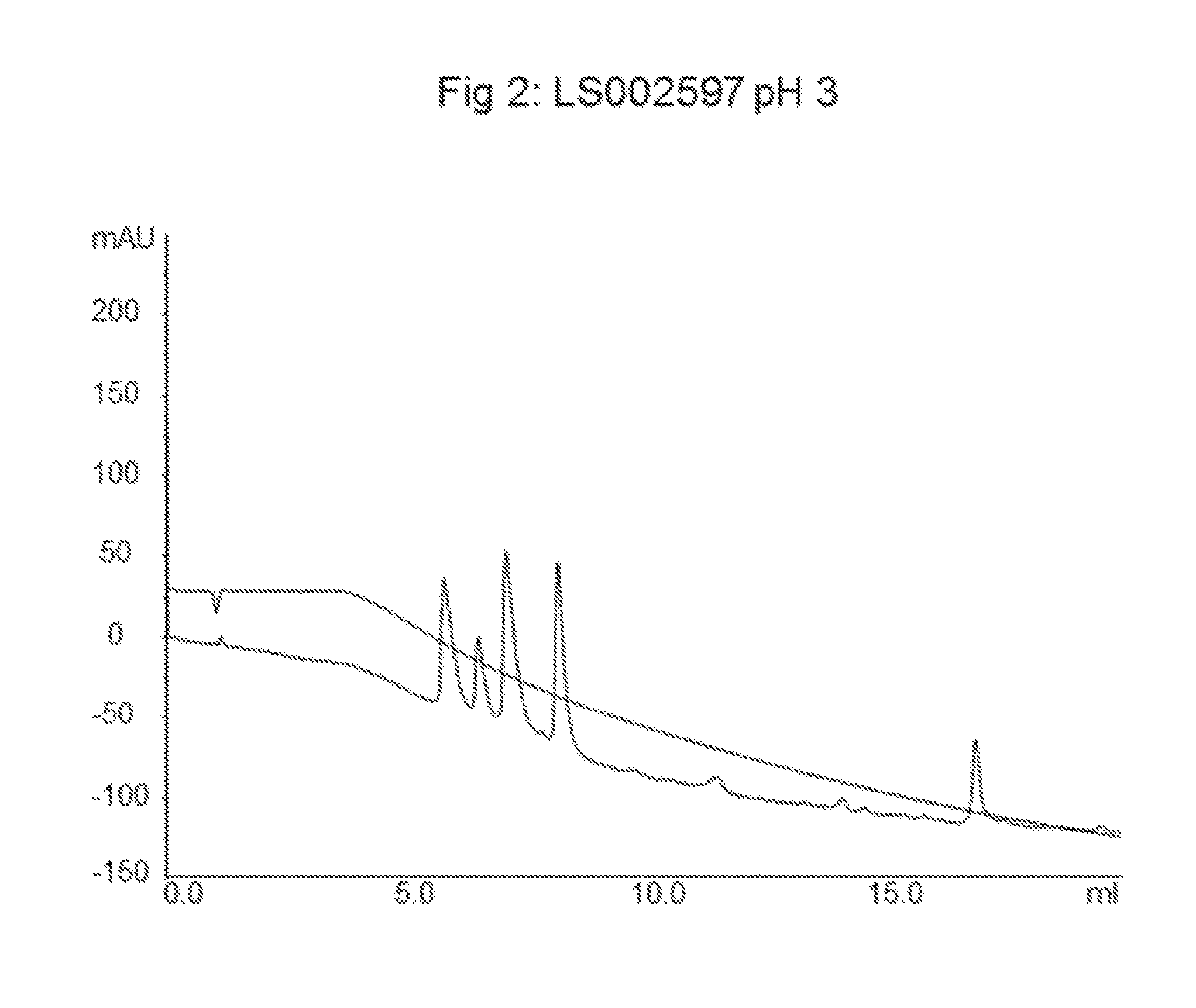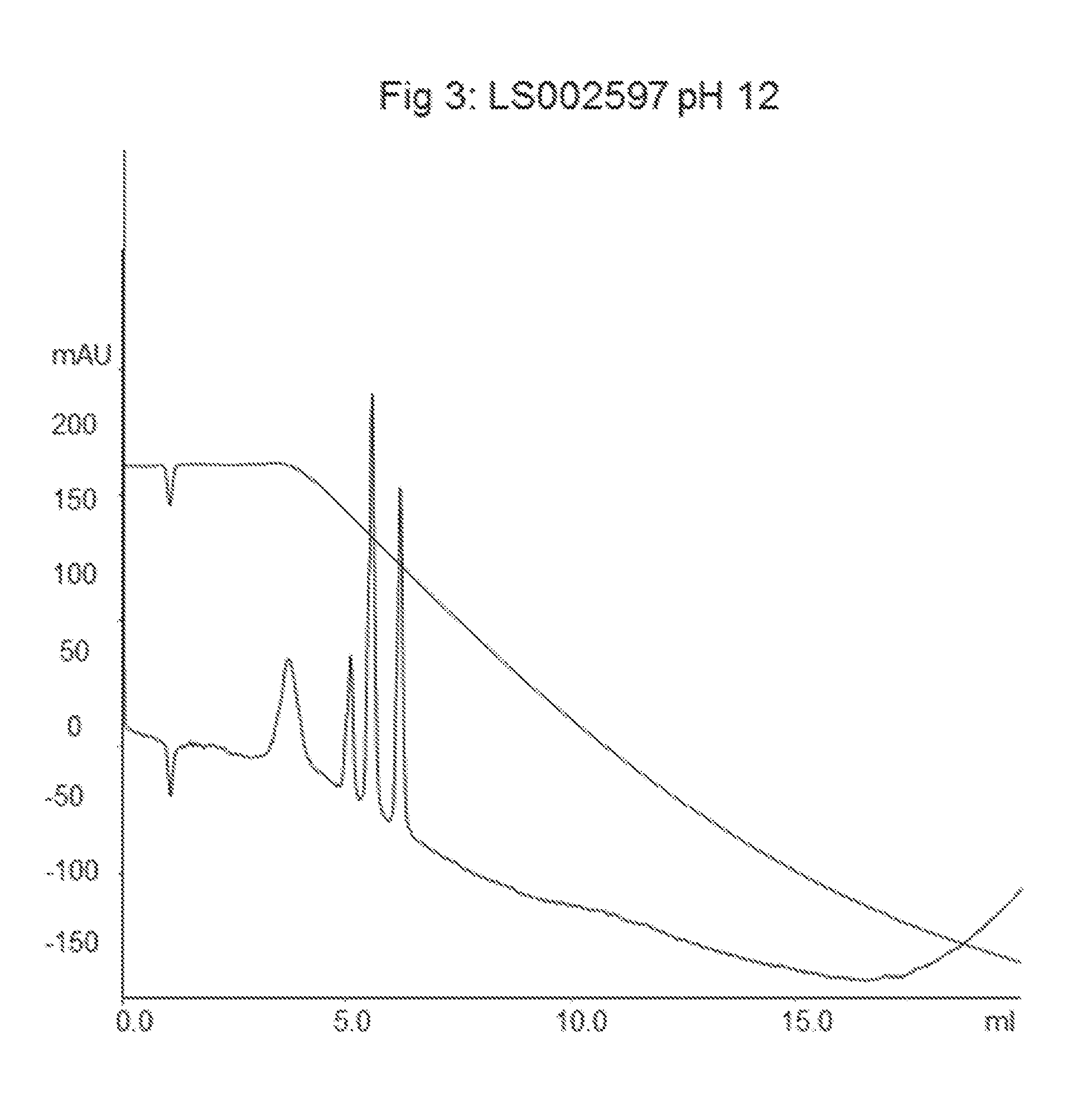Method for production of a chromatography material
- Summary
- Abstract
- Description
- Claims
- Application Information
AI Technical Summary
Benefits of technology
Problems solved by technology
Method used
Image
Examples
experiment 1
LS002597 Allylation and Grafting of Polystyrene onto Agarose Particles
Allylation
[0049]50 mL of agarose particles were washed on a sintered glass filter with 500 mL of distilled water. A 50% (w / w) solution of sodium hydroxide in distilled water was prepared and the particles were washed with 300 mL of the 50% sodium hydroxide solution. The particles were sucked dry and transferred to a 250 mL round-bottom flask equipped with a mechanical stirrer. 40 mL of 50% sodium hydroxide was added and the temperature was increased to 50° C. The stirring rate was set at 250 rpm. When the temperature is stable, 50 mL of allyl glycidyl ether was added. The reaction was allowed to proceed overnight.
[0050]The particle suspension was transferred to a sintered glass filter and the particles were washed with 500 mL of distilled water, 500 mL of ethanol and 500 mL of 20% ethanol.
[0051]The amount of attached allyl groups was determined with a titration method and was found to be 625 μmol / mL of particles.
G...
experiment 2
LS002980 Grafting of Allylated Agarose Particles with Polystyrene (Increased Amount of Styrene)
[0054]10 mL of allylated agarose particles as prepared in experiment 1 were washed on a sintered glass filter with 100 mL of toluene. The particles were sucked dry and were transferred to a 50 mL falcon tube. 10 mL of toluene, 20 mL of styrene and 360 mg of AMBN were added. Nitrogen gas was flushed through the particle suspension for 5 minutes. The falcon tube was sealed with a cap and placed in a heated shaking table set at 70° C. The reaction was allowed to proceed for 18 h.
[0055]The particle suspension was transferred to a sintered glass filter and the particles were washed with 300 mL of toluene, 300 mL of ethanol and 100 mL of 20% ethanol.
experiment 3
LS002597 Allylation and Grafting of Poly(Pentafluorostyrene) onto Agarose Particles
Allylation
[0056]200 mL of agarose particles were washed on a sintered glass filter with 2000 mL of distilled water. A 50% (w / w) solution of sodium hydroxide in distilled water was prepared and the particles were washed with 1200 mL of the 50% sodium hydroxide solution. The particles were sucked dry and transferred to a 1000 mL round-bottom flask equipped with a mechanical stirrer. 160 mL of 50% sodium hydroxide and 1.2 g of sodium borohydride were added and the temperature was increased to 50° C. The stirring rate was set at 600 rpm. When the temperature is stable, 200 mL of allyl glycidyl ether was added. The reaction was allowed to proceed overnight.
[0057]The particle suspension was transferred to a sintered glass filter and the particles were washed with 500 mL of distilled water, 500 mL of ethanol and 500 mL of 20% ethanol.
[0058]The amount of attached allyl groups was determined with a titration m...
PUM
| Property | Measurement | Unit |
|---|---|---|
| Fraction | aaaaa | aaaaa |
| Fraction | aaaaa | aaaaa |
| Fraction | aaaaa | aaaaa |
Abstract
Description
Claims
Application Information
 Login to View More
Login to View More - R&D
- Intellectual Property
- Life Sciences
- Materials
- Tech Scout
- Unparalleled Data Quality
- Higher Quality Content
- 60% Fewer Hallucinations
Browse by: Latest US Patents, China's latest patents, Technical Efficacy Thesaurus, Application Domain, Technology Topic, Popular Technical Reports.
© 2025 PatSnap. All rights reserved.Legal|Privacy policy|Modern Slavery Act Transparency Statement|Sitemap|About US| Contact US: help@patsnap.com



